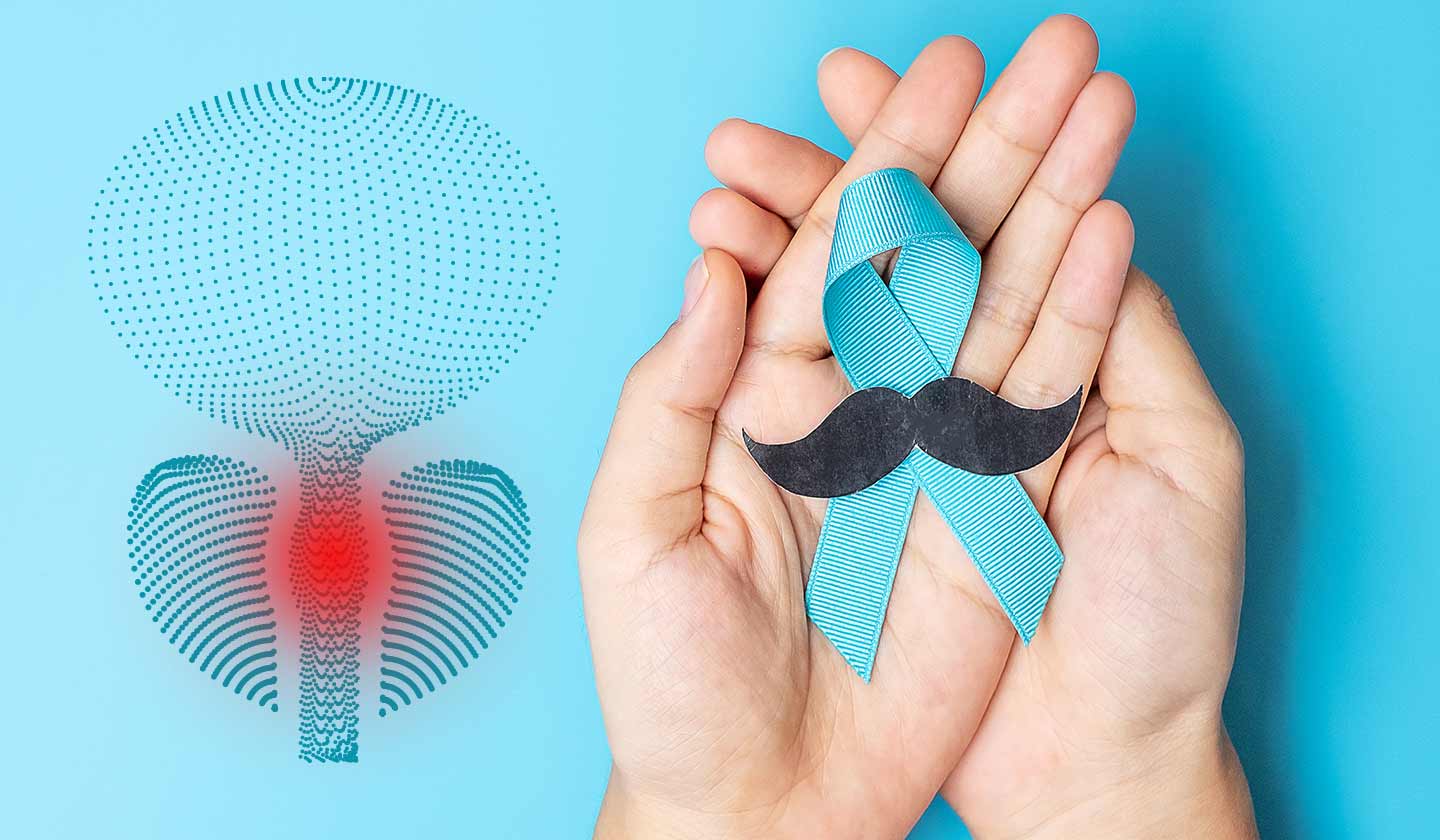Urinary tract
Male problems - Prostate

In recent decades, with the increase in life expectancy, the incidence of prostate diseases has increased, namely Benign Prostatic Hyperplasia (BPH) and Prostate Cancer.
Prostate Cancer is one of the most prevalent neoplasms in men, and its incidence increases with age, particularly after the age of 50.
The geographical incidence of this cancer is very variable, being more frequent in the United States, particularly among the African-American population, and in Northern Europe, namely in the Nordic countries. The lowest values have been observed in Japan and China.
In the European Union, it is estimated that 85,000 new cases of prostate cancer are diagnosed each year.
In terms of incidence, in Portugal, Prostate Cancer ranks third among oncological diseases and second in mortality rate, being responsible for about 1800 deaths per year.

Prostate Anatomy and Function
The prostate is a gland of the male genital tract. It is located below the bladder, in front of the rectum, surrounding the initial portion of the urethra. It has the size and appearance of a chestnut and weighs about 15-30 grams.
One of the main functions of this gland is to produce a liquid, the prostatic secretion, which during ejaculation is released into the urethra, where it mixes with the other constituents of sperm. This prostatic secretion increases the vitality of the spermatozoa and decreases the acidity of the vagina
The prostate gland is divided into three zones: central, transitional and peripheral.
In general, prostate cancer and prostatitis develop in the peripheral zone and BPH in the transitional zone.
The prostate has two growth periods, the first at puberty, where it doubles in size, and then continues to grow slowly until the fifth decade of life. The second growth period occurs, in most men, around the age of 50 and it is from this second growth phase that problems may arise, namely BPH and Prostate Cancer.

Prostate Pathologies and Symptoms
After the age of 50, prostate volume can be expected to increase by up to 0.6 grams per year, thus increasing the risk of developing prostate problems.
When the prostate becomes enlarged, due to BPH or Prostate Cancer, there is compression in the urethra, which makes it difficult to pass urine. At the same time, the bladder wall becomes thicker because it has to make a greater effort to expel the urine. The bladder becomes sensitive and irritable, and more frequent urination, preceded by micturition imperiosis, occurs. Sometimes the bladder muscle fails and the bladder does not empty completely. Urinary retention can be partial and chronic or acute. These changes in bladder function can have important kidney consequences.
It is important to stress that as soon as the first urinary signs or symptoms appear, which can be irritating or obstructive, it is important to seek medical advice
Urinary symptoms associated with an enlarged prostate can arise in three situations:
- Benign Prostatic Hyperplasia (BPH)
- Prostate Cancer (PCa)
- Prostatitis
Individuals over the age of 50 or over the age of 40 and with a family history of Prostate Cancer or other risk factors should have an annual clinical prostate evaluation, even if they have no symptoms.

Tests to evaluate prostate diseases
The first step of the evaluation process is the clinical history, which should be as detailed as possible.
The exams usually performed, in a first approach, for the evaluation of prostate diseases are: general physical examination, rectal examination and serum levels of prostate specific antigen (total PSA).
After the evaluation of the results, the physician may request other complementary diagnostic tests, namely: transrectal ultrasonography of the prostate gland, prostate biopsy, urinary sediment, uroculture, creatinine, among others.
Sources
National Cancer Institute
Estudo PROSPOR






